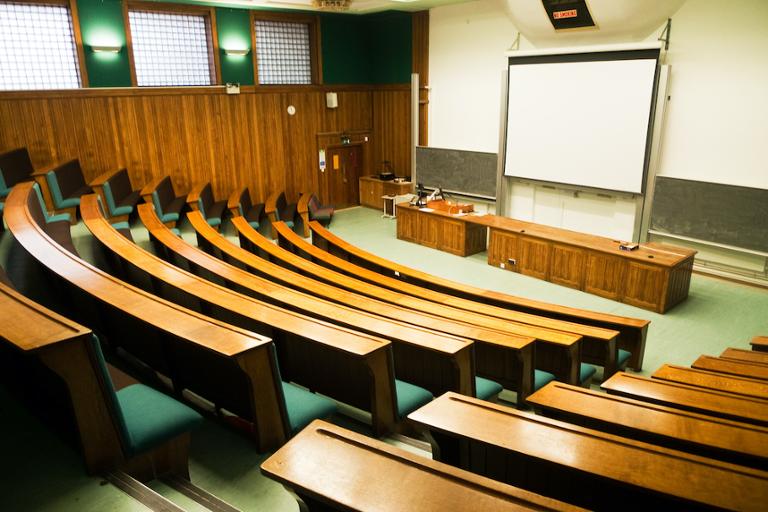The outbreak of COVID-19 (followed by “social distancing” for much of the country) has been an adjustment for the entire business community, as well as academia. Students who are learning tech skills such as programming and cybersecurity have faced an abrupt transition from in-person to online classes. Some professors who are virtuosos in a physical classroom are likewise finding it difficult to get a sense of their new, virtual learning spaces.
“You need some kind of better technology to pan the room, even just rotating through the room, doing it randomly so you could see everybody's faces and get some better idea of what people's expressions are,” said Steven M. Bellovin, professor of computer science and member of the Data Science Institute at Columbia University.
When it comes to learning tech skills such as programming, cybersecurity and data science, there are also differences in how students learn online versus a live classroom setting. For instance, professors stuck with online teaching tools may not have the time or capability to give students 1:1 attention in labs that involve complicated tasks, such as setting up a distributed system. The teaching of hands-on tasks such as threading cable through a server rack is also radically altered.
Nonetheless, the current crisis shouldn’t impede the generalized learning of tech skills, suggests David Joyner, executive director of the Online Master of Science in Computer Science (OMSCS) at the Georgia Institute of Technology.
“In the tech sector, everything is actually very well-suited to being taught online because you're using the medium you're learning about to do the learning,” Joyner said. “If you're learning about programming, you're already dealing with a computational environment. You're learning about cybersecurity. You're already dealing with platforms that are subject to that.”
Because of its procedural nature, tech studies can adapt well to the need for remote learning due to COVID-19. That means students have the flexibility to practice skills such as programming, debugging software and setting up infrastructure on their own time. Joyner considers classroom learning to be passive, which requires that students gradually absorb concepts. You can learn tech skills at your own pace through online learning.
The Adjustments
In this new, online-centric learning environment, some students may face issues with the digital divide and who has broadband access, according to Bellovin. “That’s a societal problem,” he said.
Participation takes more effort in a video conferencing service than in a real classroom. It’s easy to talk over each other on a video conference, and students fumble to unmute themselves or find a “raise your hand” button, Bellovin said. When some people are remote and some in the room, the remote people are sometimes treated like “second class” when it comes to participation (which might not be a massive problem as many schools go all-virtual).
Bellovin also sees some timing issues in online learning, given how students and instructors may be in different time zones. And yet, despite his hesitation regarding online teaching, he thinks video conferencing is the best option available given the COVID-19 health crisis and the need to reduce the spread of infection.
“I don't see a better alternative given the need for isolation, given the potential for massive infection in, for example, university dormitories with shared bathrooms and shared kitchens,” Bellovin said. “They undoubtedly did the right thing, and they acted before the largest society did, and I think correctly so.”
During the period of distance learning due to COVID-19, Bellovin plans to put grading on hold until professors can make a fair assessment of students’ work. Exams are the most difficult problem for him during this pandemic. “What do you do that’s scalable, when you’ve got a large classroom and people are scattered around the world that have to be alone?” he asked. Students are taking exams in multiple time zones, and Bellovin is thinking of giving students 24 or 48 hours to take a test.
However, tech-related learning could be suitable for remote assessment as students practice skills such as coding and determine for themselves when they’re ready to advance, according to Joyner.
Logistical Challenges
Online learning of tech skills had already taken off before COVID-19 hit. But for many students, the biggest disruption right now isn’t a shift to online learning—it’s the stress of the crisis itself. “Everything has been disrupted. People's lives have been upended,” Bellovin said. “At least three of my project students have said, ‘Well, OK, I need an extra week here, professor, because I'm forced to move.’”
COVID-19 may not be changing how technology is learned, but it is bringing some logistical and emotional adjustments for students, Joyner added. As with many other universities, Georgia Tech has moved to a distance-learning model for the remainder of the semester, and school has ended abruptly for some seniors. That has led to some internships being canceled.
Another factor affecting learning is the distractions at home for some people, rather than changes in the actual coursework, Joyner said.
Despite the benefits that online learning brings, the sudden change of routines due to the COVID-19 pandemic may turn people off to online learning in the future, according to Joyner. That’s because teachers haven’t had extensive training in this area. “We're not giving instructors who haven't taught online before a real great chance of success,” Joyner said. “This is an emergency situation.”
Still, the crisis could also influence some people to continue with remote learning, according to Joyner: “I think in the tech sector, I anticipate a more positive reaction because we've really already been doing this for several years.”



